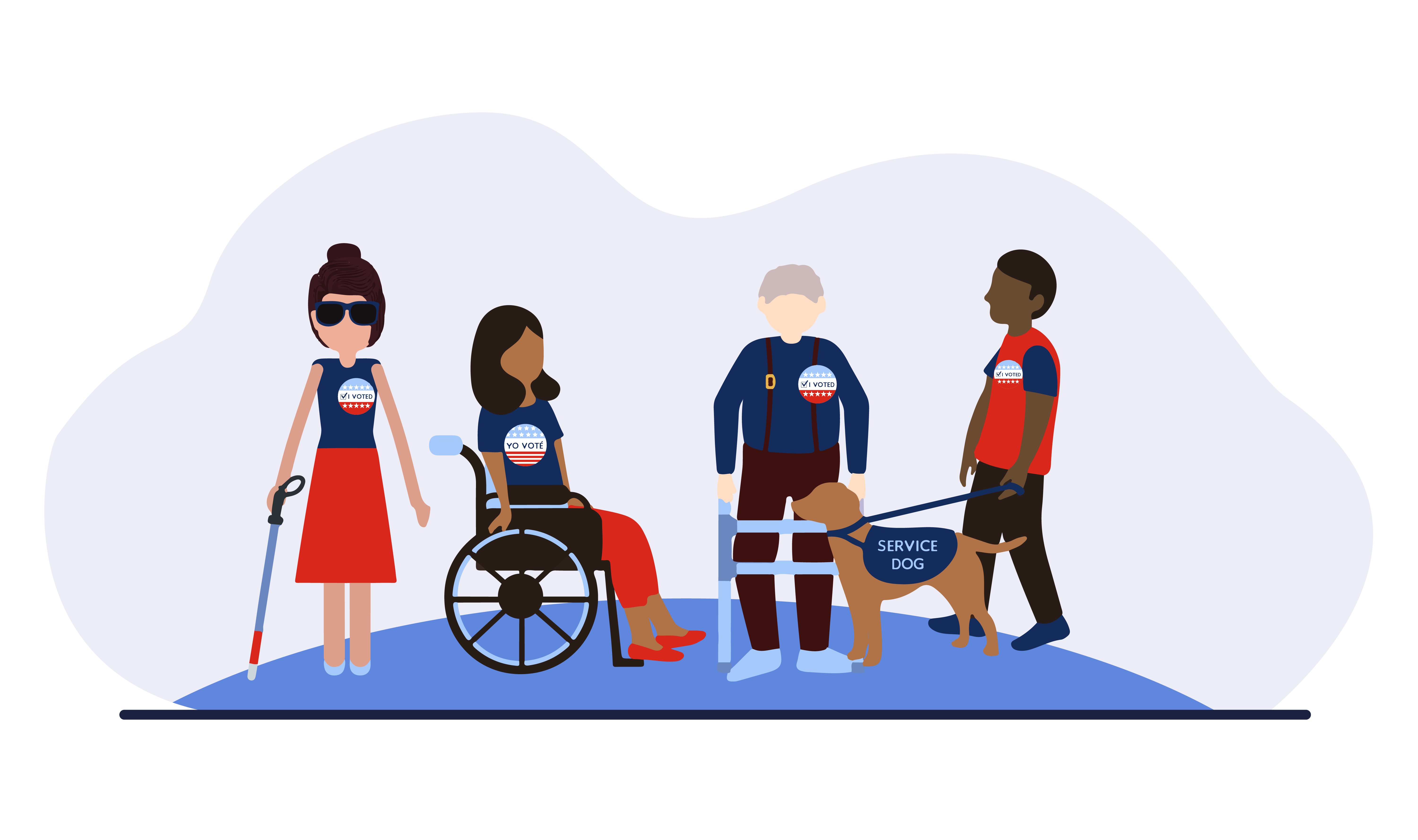NIST Draft Publication Addresses Removing Barriers for Voters With Disabilities
Public comment is welcome and solicited on the draft, with a final version slated for December.

As part of the federal government’s effort to improve access to voting, the National Institute of Standards and Technology (NIST) has released a draft publication outlining barriers that voters with disabilities may encounter during the election process — as well as potential approaches for addressing them. NIST is requesting comments on the draft by Nov. 22, 2021, to inform a final version expected in December.
The draft publication, formally titled Promoting Access to Voting: Recommendations for Addressing Barriers to Private and Independent Voting for People with Disabilities (NIST Special Publication 1273), forms part of NIST’s response to the March 7, 2021, Executive Order (EO) 14019 on Promoting Access to Voting.
The draft reflects the 171 public comments NIST received to its Request for Information (RFI) of June 2021 on barriers that people with disabilities encounter at all stages of the election process.
“The majority of the responses we received to the RFI were from individuals with disabilities,” said NIST’s Sharon Laskowski, an author of the draft. “Some responses were from advocacy groups, and a few more came from vendors and from state and local election officials, but we were pleased to see the number of individuals who took the time to respond.”
Some of the comments from individuals are highlighted in the draft publication text as blue-tinted “quote bubbles” that describe personal experiences of barriers to voting. One response from a voter who uses a wheelchair describes a precinct that in 2021 remains inaccessible, while another from a person with low vision indicates that poll workers often do not know how to turn on the voice feature in voting machines — in this case needing two hours to figure out how.
“People spoke from the heart, and they expressed how important it was for them to be able to vote independently and privately,” Laskowski said. “The comments we received ranged across all 20 topics we listed in the RFI.”
“The majority of the responses we received to the RFI were from individuals with disabilities. ... We were pleased to see the number of individuals who took the time to respond.” —Sharon Laskowski, NIST
The draft publication is organized into seven chapters: an introduction followed by six others dedicated to parts of the voting process. Each chapter that follows the introduction presents a class of barriers followed by potential means of addressing them.
Chapter 2 concerns systemic barriers that people with disabilities may encounter across the voting process. For instance, voters who rely on alternative communication, language and interaction styles face barriers when searching for information, whether by requesting election information on paper, asking for it in person or registering to vote online.
Chapters 3 to 7 each concern a specific part of the voting process mentioned by name in Section 7 of the EO, including barriers encountered at polling places or when interacting with voting technology. Chapter 3, in particular, concerns the online Federal Voter Registration Form, which the EO indicates could be accessible to all voters, but which in its current form may present obstacles that cause voters with disabilities to use it far less frequently. For example, the form must be physically signed and returned, which is a challenge for voters who have difficulties reading printed text or handling paper.
While the draft makes general recommendations concerning these barriers — such as improving poll worker training and making polling locations more accessible — the authors do not make suggestions for how any specific voting jurisdiction should implement them, given the many differences among the nation’s jurisdictions, which number in the thousands.
“We want to see these recommendations implemented so that voting systems are accessible to all voters, but we also recognize that jurisdictions will have to consider their own unique circumstances when removing barriers,” Laskowski said. “This NIST publication aims to help state and local officials analyze situations in their own context and improve accessibility for their own voters with disabilities.”
NIST will accept comments on the draft document until Nov. 22, 2021. Commenters are encouraged but not required to use the comment template. Comments may be submitted by email to pva-eo [at] list.nist.gov (pva-eo[at]list[dot]nist[dot]gov) or at www.regulations.gov. For complete instructions for submitting comments, go to the Federal Register notice or NIST’s voting webpage. The draft report is available for review online.

